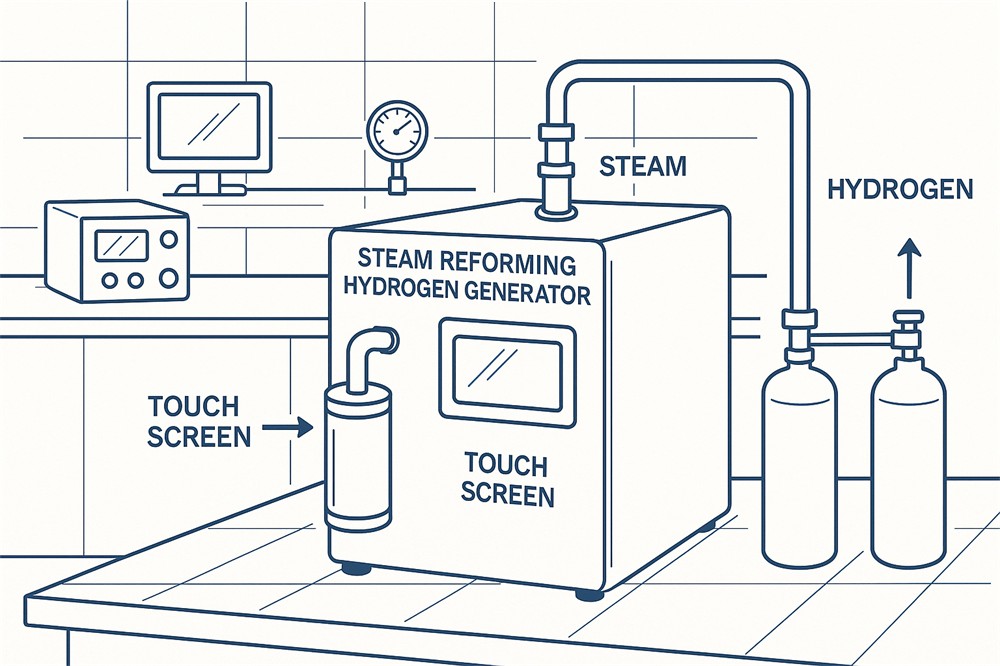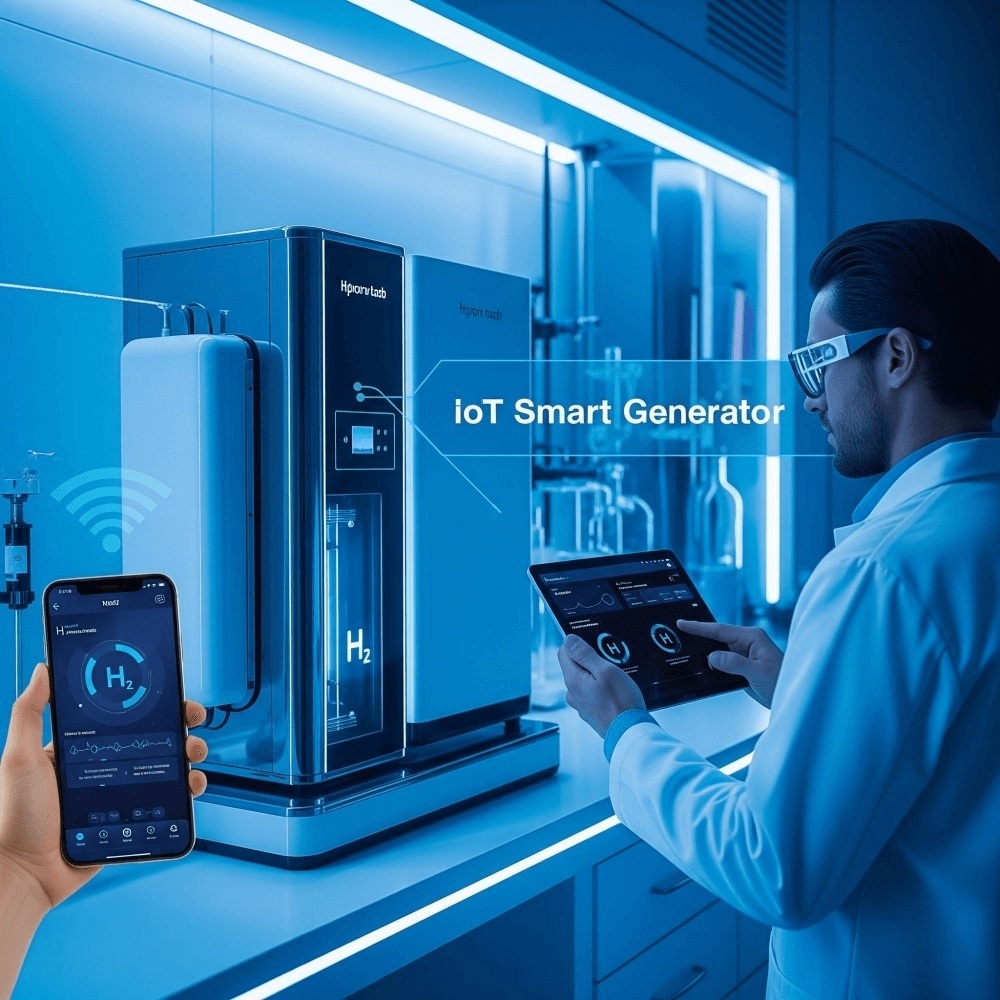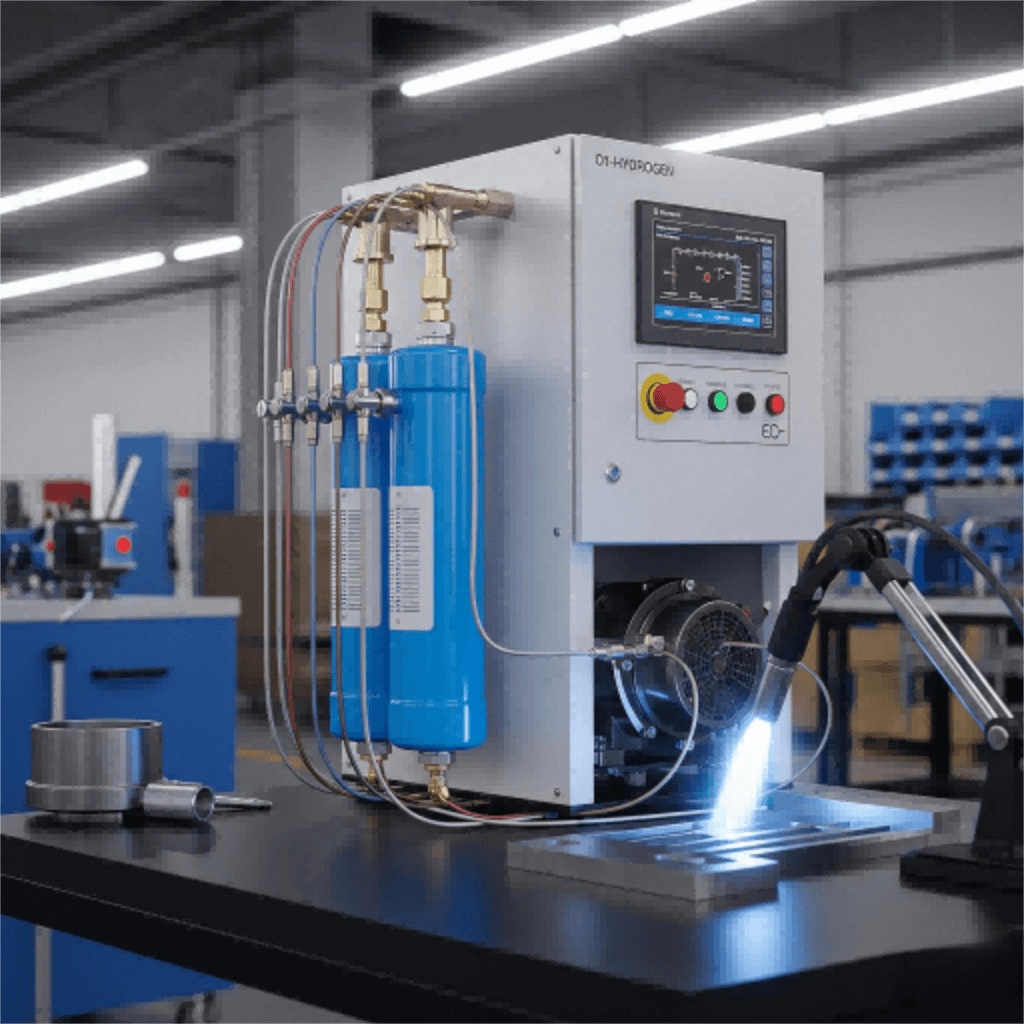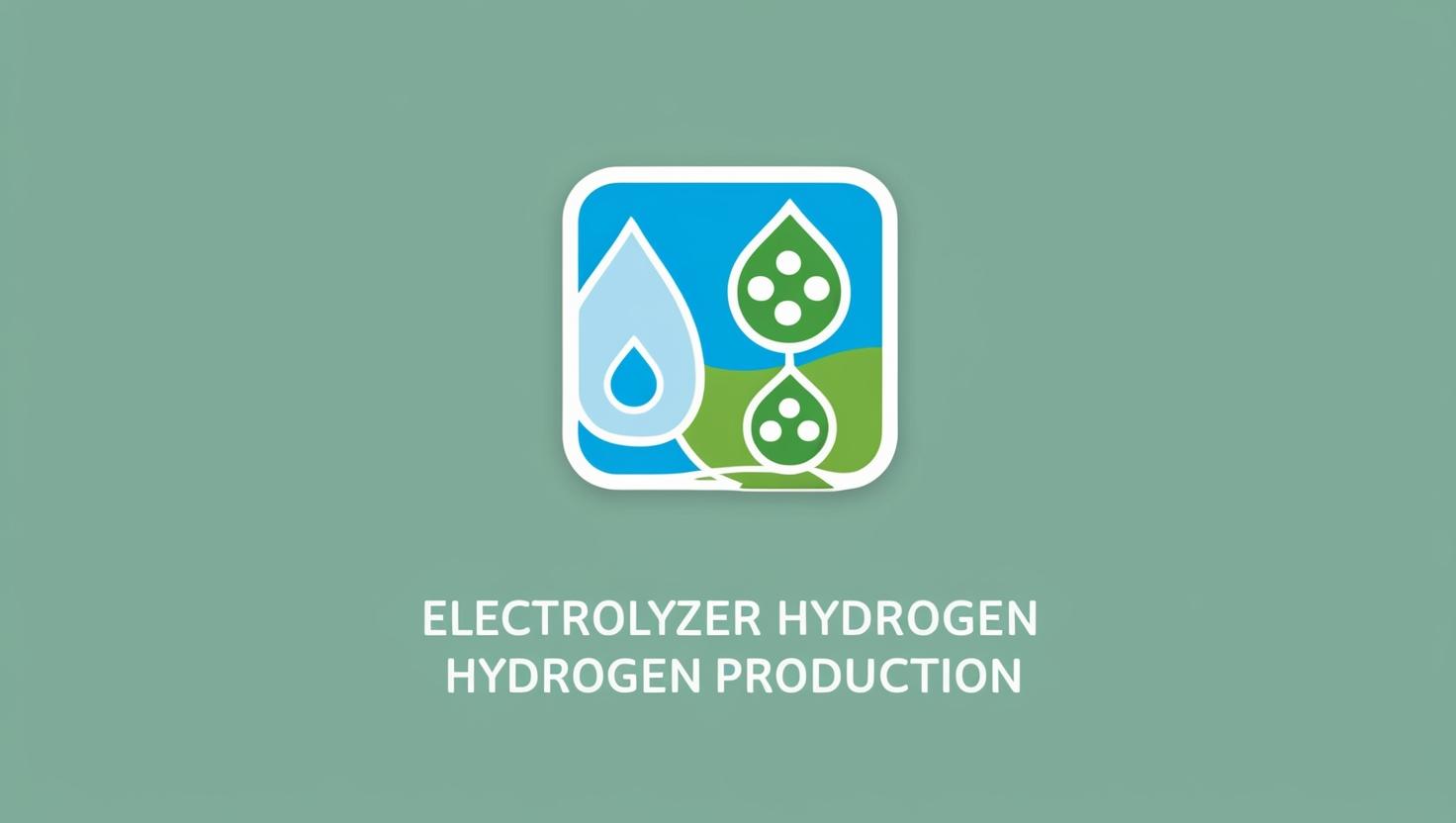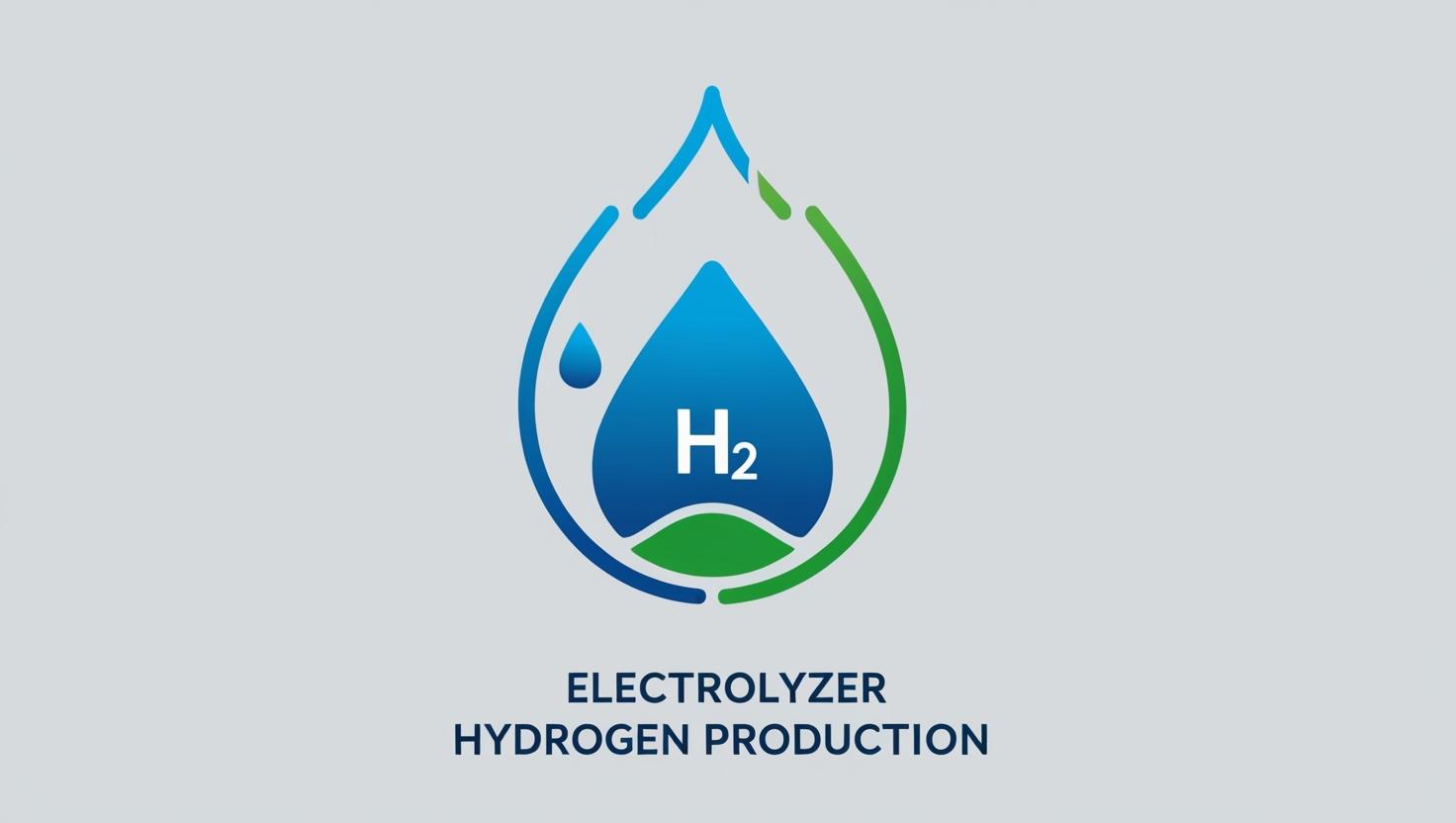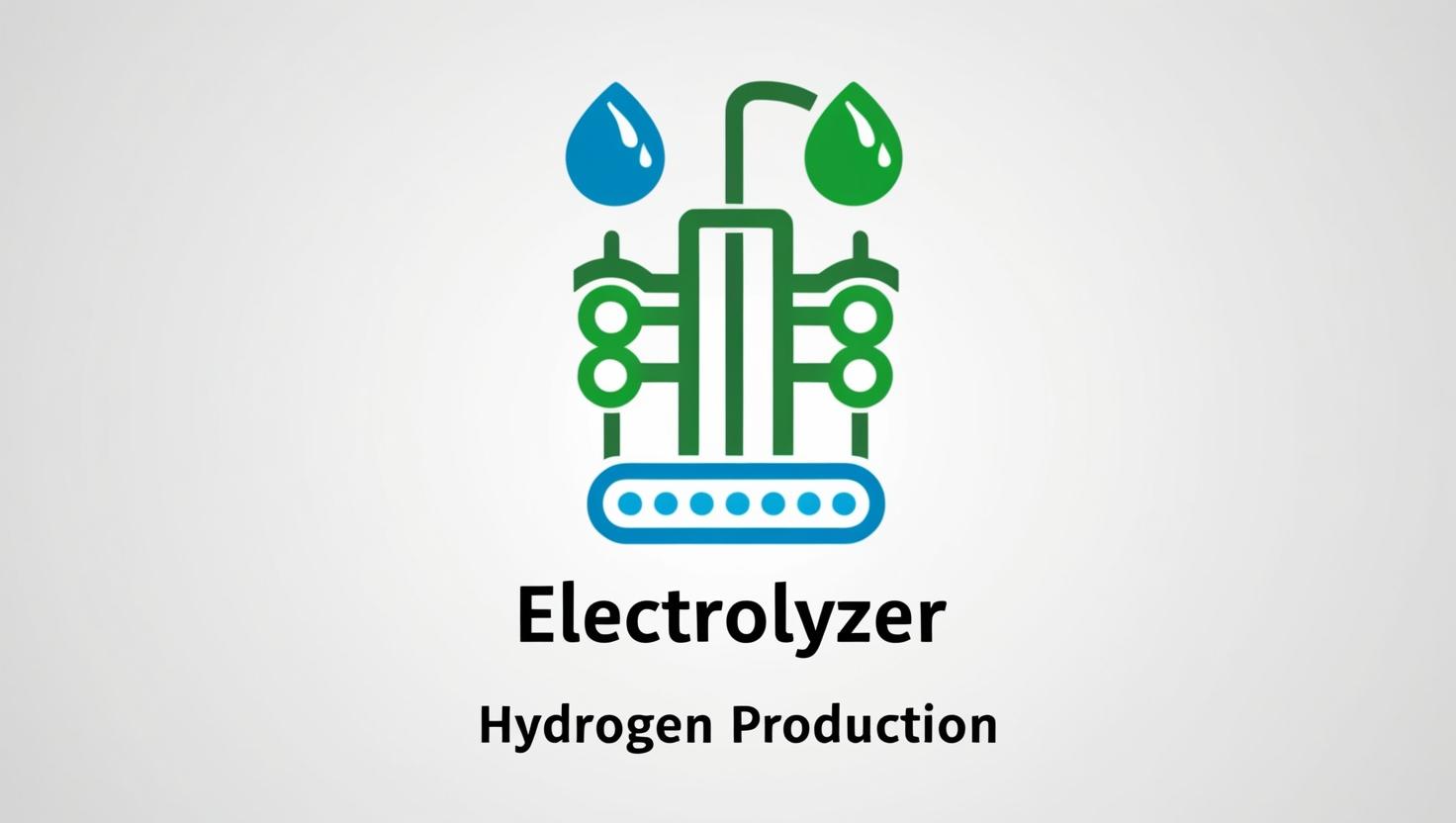Discover everything about the green hydrogen generator — a clean, renewable solution driving the future of energy. Learn how it works, its benefits, applications, and more!
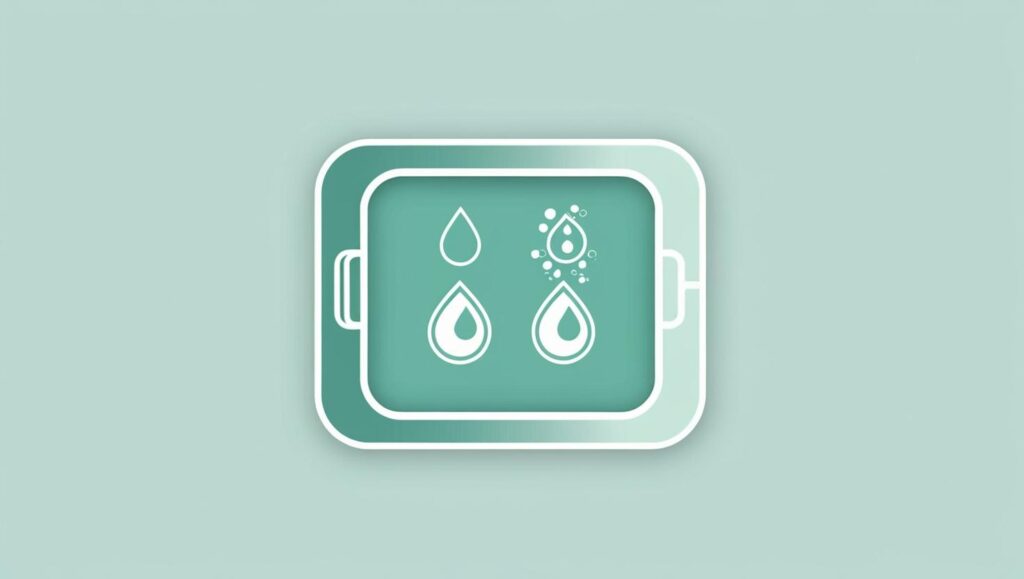
Introduction
We’re living in a time where clean, renewable energy is more than just a trend — it’s a necessity. Among the technologies leading this energy revolution is the green hydrogen generator. These powerful systems convert water into clean hydrogen fuel using renewable energy. Sound futuristic? It’s not — it’s here, it’s real, and it’s changing the way we think about energy. Whether you’re a homeowner, business owner, or an eco-conscious traveler, this tech might soon power your world.
Green Hydrogen Generator
The green hydrogen generator is a special device that uses electricity from renewable sources to split water into hydrogen and oxygen. The process, known as electrolysis, is entirely emission-free if powered by solar, wind, or hydropower. Unlike grey or blue hydrogen (produced from natural gas), green hydrogen is clean, sustainable, and holds great promise in achieving carbon neutrality.
When these generators are powered by renewable energy, they don’t just reduce emissions — they erase them. That’s what makes them stand out. Whether you’re trying to power a remote cabin or fuel a fleet of trucks, a green hydrogen generator can be part of the solution.
Understanding Green Hydrogen
What Is Green Hydrogen?
Green hydrogen is hydrogen fuel created by splitting water (H₂O) using electricity generated from renewable resources. This means no emissions, no pollution — just clean fuel ready to be used in engines or fuel cells.
How Green Hydrogen Differs from Blue and Grey Hydrogen
Blue hydrogen is made from natural gas with carbon capture, while grey hydrogen emits CO₂ during production. Green hydrogen skips fossil fuels altogether, making it the cleanest option available.
How a Green Hydrogen Generator Works
Electrolysis: Splitting Water with Renewable Energy
The generator uses electrolysis to split water into hydrogen and oxygen. Electricity flows through a membrane or electrolyte, separating the H₂ and O₂ atoms.
Role of PEM and Alkaline Electrolyzers
PEM (Proton Exchange Membrane) electrolyzers are compact and efficient, ideal for portable setups. Alkaline systems, on the other hand, are more cost-effective for large-scale industrial use.
Types of Green Hydrogen Generators
Portable vs. Industrial Green Hydrogen Generators
Portable units are ideal for fieldwork, camping, or backup power. Industrial generators power factories and supply green fuel to hydrogen fueling stations.
Stationary vs. Mobile Systems
Stationary systems stay in one location, often connected to solar or wind farms. Mobile systems are designed for transport and temporary use.
Key Components of a Green Hydrogen Generator
- Electrolyzer Stack: The heart of the system that splits water.
- Water Supply System: Must be clean or deionized for best results.
- Power Management Unit: Ensures stable voltage and current input from renewables.
Green Hydrogen Generator Applications
Transportation and Fuel Cell Vehicles
Fuel cell vehicles powered by hydrogen emit only water vapor. Trucks, buses, and even trains now run on hydrogen, thanks to these generators.
Power Backup for Homes and Businesses
When the grid fails, green hydrogen generators can keep the lights on. They’re also great for off-grid living.
Industrial Usage in Steel and Ammonia
Hydrogen is essential in making steel and ammonia. Switching to green hydrogen helps decarbonize these industries.
Renewable Energy Sources for Hydrogen Production
Solar-Powered Hydrogen Generators
Panels soak up the sun and power electrolysis — it’s silent, simple, and sustainable.
Wind-Powered Hydrogen Systems
Wind turbines can run the generator around the clock in windy areas.
Hybrid Renewable Integration
Combining solar, wind, or even hydropower creates a more reliable power source for consistent hydrogen production.
Environmental Benefits of Using a Green Hydrogen Generator
- No Greenhouse Gases: Helps reduce climate change.
- Clean Byproducts: Only emits oxygen and water.
- Supports Renewable Economy: Shifts away from fossil fuel dependency.
Challenges in Adopting Green Hydrogen Generators
- Cost: Still higher than traditional generators.
- Efficiency: Water quality and energy loss remain technical hurdles.
- Infrastructure: Lack of refueling stations and hydrogen pipelines in many regions.
Economic Impact and Cost Analysis
Governments are offering tax breaks, grants, and subsidies to accelerate hydrogen adoption. The long-term savings in fuel and carbon credits often outweigh the initial investment.
Green Hydrogen Generator for Residential Use
With the right setup, homeowners can generate their own hydrogen and use it for heating, cooking, or power storage. Integration with rooftop solar panels makes this even more practical.
Green Hydrogen in Commercial Sectors
From farms to warehouses, hydrogen is replacing diesel for forklifts, tractors, and even irrigation pumps. Businesses are enjoying cleaner operations and lower emissions.
Portable Green Hydrogen Generator: A Game-Changer
These compact units are used during blackouts, fieldwork, or outdoor adventures. Lightweight, silent, and safe — they’re an eco-friendly alternative to noisy gas generators.
Global Trends and Market Insights
Countries like Germany, Japan, and Australia are leading the charge with national hydrogen strategies. According to IEA, the global green hydrogen market could be worth over $700 billion by 2050.
Policies and Regulations
The EU and US both have green hydrogen roadmaps. These include tax breaks, infrastructure grants, and regulatory guidance to make hydrogen safer and more accessible.
Hydrogen Storage and Distribution
Storage remains a challenge. Options include high-pressure tanks, metal hydrides, and cryogenic liquid hydrogen. Efficient storage will be key to large-scale adoption.
Safety Measures and Protocols
Though hydrogen is flammable, proper design and handling make it as safe as gasoline. Leak detectors, flame arrestors, and robust containers are standard.
Comparing Hydrogen Generators
Green wins on sustainability, but blue and grey still dominate due to lower short-term costs. Long term, green is expected to be the most viable and widely adopted.
Technological Innovations in Hydrogen Generators
Smart generators now come with IoT monitoring, AI-based load prediction, and better membranes that reduce energy loss and improve durability.
Green Hydrogen and the Energy Transition
Hydrogen can bridge the gap between intermittent renewables and round-the-clock power needs. It’s key to decarbonizing sectors like shipping, aviation, and manufacturing.
Manufacturers and Key Players
Companies like Plug Power, Siemens Energy, and ITM Power are at the forefront. Several startups are also developing low-cost, modular green hydrogen generator systems.
Case Studies and Success Stories
In California, green hydrogen powers city buses. In Australia, solar hydrogen powers a whole remote town. These real-world wins show it’s not just theory — it’s happening now.
FAQs About Green Hydrogen Generators
How much does a green hydrogen generator cost? Prices vary, but residential units can start at $5,000 while industrial ones may exceed $500,000.
Is green hydrogen really clean? Yes, as long as the electricity used comes from renewable sources.
Can I power my home with a green hydrogen generator? Absolutely, with the right setup, including solar panels and storage tanks.
Is hydrogen safe to use at home? When installed and maintained properly, it’s as safe as propane or natural gas.
What’s the efficiency of a green hydrogen generator? Current systems are around 60–80% efficient, and tech improvements are pushing this higher.
Can I use rainwater in my generator? No, the water must be purified or deionized to avoid damaging the electrolyzer.
Conclusion
Green hydrogen generators offer an incredible opportunity to embrace clean energy without sacrificing performance or reliability. They’re safe, scalable, and surprisingly versatile — from powering your car to running your home. As more countries and companies invest in hydrogen infrastructure, it’s only a matter of time before this technology becomes a common part of our daily lives. Ready or not, the hydrogen age is here — and it’s looking green.

